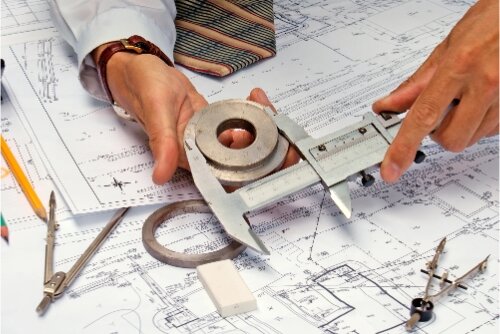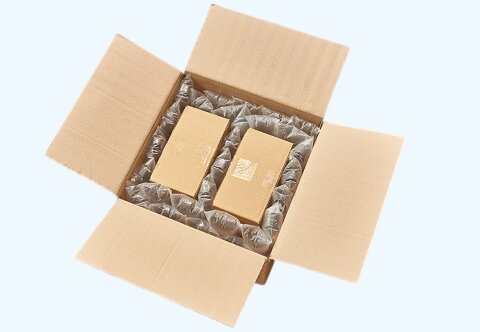Cada fabricante se enfrenta a una decisión crítica a la hora de seleccionar la tecnología de corte de metales. Los elevados costes de los materiales, los ajustados plazos de producción y los requisitos de calidad pueden dificultar la elección entre el corte por plasma y por láser. Ambas tecnologías ofrecen ventajas claras, pero elegir la equivocada puede afectar a su cuenta de resultados.
Para proyectos rápidos que requieren cortes básicos en metales gruesos, el corte por plasma resulta más rentable y rápido. Sin embargo, el corte por láser destaca en trabajos de precisión, ya que ofrece una calidad de bordes superior y tolerancias más ajustadas, por lo que resulta ideal para diseños complejos y materiales finos.
¿Listo para explorar la comparación detallada? Examinemos cómo se comporta cada método en las áreas de rendimiento clave para sus proyectos.
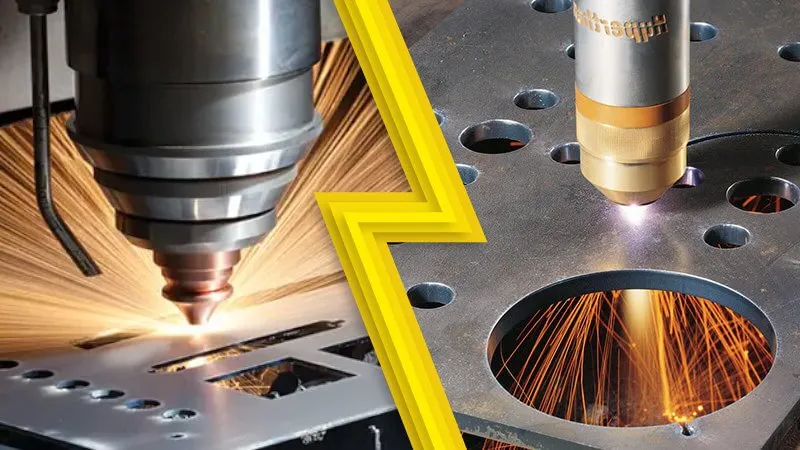
Corte por plasma
La innovación en el corte de metales se une a la eficacia práctica. Corte por plasma transformado la fabricación industrial de metales al ofrecer soluciones rápidas y rentables para el procesamiento de metales gruesos. Esta sección desglosa los aspectos fundamentales de la tecnología del plasma.
¿Qué es el corte por plasma?
El corte por plasma utiliza gas ionizado a alta temperatura para cortar metales conductores. El proceso crea un arco concentrado que alcanza temperaturas de hasta 40.000 °F, lo que lo hace lo bastante potente para cortar los metales más duros.
Cómo funciona el corte por plasma
El proceso comienza cuando un gas comprimido fluye a través de una boquilla estrecha. Un arco eléctrico ioniza este gas, creando un plasma que funde el metal y sopla el material fundido. Es como un rayo controlado que corta el metal con precisión.
Ventajas del corte por plasma
Velocidad y eficacia
El corte por plasma es rápido, sobre todo en materiales gruesos. Puede cortar acero de 2 pulgadas cinco veces más rápido que otros métodos. Los costes operativos se mantienen bajos gracias a las mínimas piezas consumibles y a los rápidos tiempos de preparación.
Versatilidad de los materiales
Esta tecnología maneja diversos metales conductores:
- Acero de hasta 15 cm de grosor
- Aluminio de todas las calidades
- Cobre y latón
- Acero inoxidable
Limitaciones del corte por plasma
Zona afectada por el calor (ZAC)
El calor intenso crea una ZAT más amplia que el corte por láser. Esto afecta:
- Propiedades del material cerca del corte
- Requisitos de postprocesamiento
- Calidad general de la pieza
Cuestiones de precisión
El corte por plasma muestra limitaciones en el trabajo de detalle:
- Mayor anchura de corte que el corte por láser
- Menos preciso en patrones intrincados
- Los bordes angulares pueden necesitar operaciones secundarias
- Diámetro mínimo del orificio limitado al grosor del material
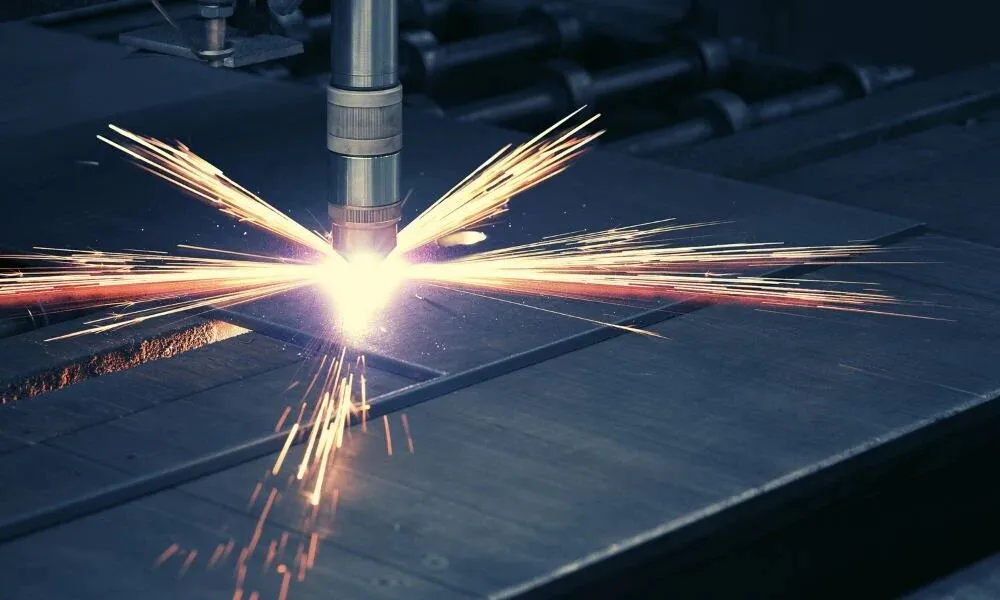
Corte por láser
La fabricación moderna exige precisión, y esta sección explora cómo la tecnología láser satisface estas necesidades. Corte por láser representa el pináculo de la precisión en la fabricación de metales, ofreciendo capacidades que transforman diseños complejos en realidad.
¿Qué es el corte por láser?
El corte por láser utiliza energía luminosa focalizada para fundir, quemar o vaporizar materiales con precisión microscópica. Esta tecnología crea un haz de luz concentrada lo suficientemente caliente como para cortar diversos materiales manteniendo una precisión excepcional.
Cómo funciona el corte por láser
Un láser de alta potencia genera un intenso haz de luz. Este haz se enfoca a través de un sistema óptico sobre la superficie del material, creando una zona de calentamiento localizada. Unos espejos controlados por ordenador guían el haz por trayectorias programadas, garantizando cortes precisos.
Ventajas del corte por láser
Alta precisión y exactitud
El corte por láser alcanza una precisión notable:
- Tolerancias tan ajustadas como ±0,004 pulgadas
- Patrones complejos y detalles intrincados
- Calidad constante en todas las fases de producción
Bordes limpios y residuos mínimos
La tecnología produce resultados superiores:
- Bordes cortados con acabado de espejo
- Distorsión mínima del material
- Menor necesidad de acabado secundario
- Tasas de chatarra más bajas
Limitaciones del corte por láser
Limitaciones de materiales
No todos los materiales funcionan bien con el corte por láser:
- Restricciones de espesor para metales
- Los materiales reflectantes requieren una manipulación especial
- Algunos materiales generan humos peligrosos
Mayores costes iniciales
Las consideraciones financieras incluyen:
- Importante inversión en equipos
- Mantenimiento periódico
- Mayor consumo de energía
- Formación especializada para operadores
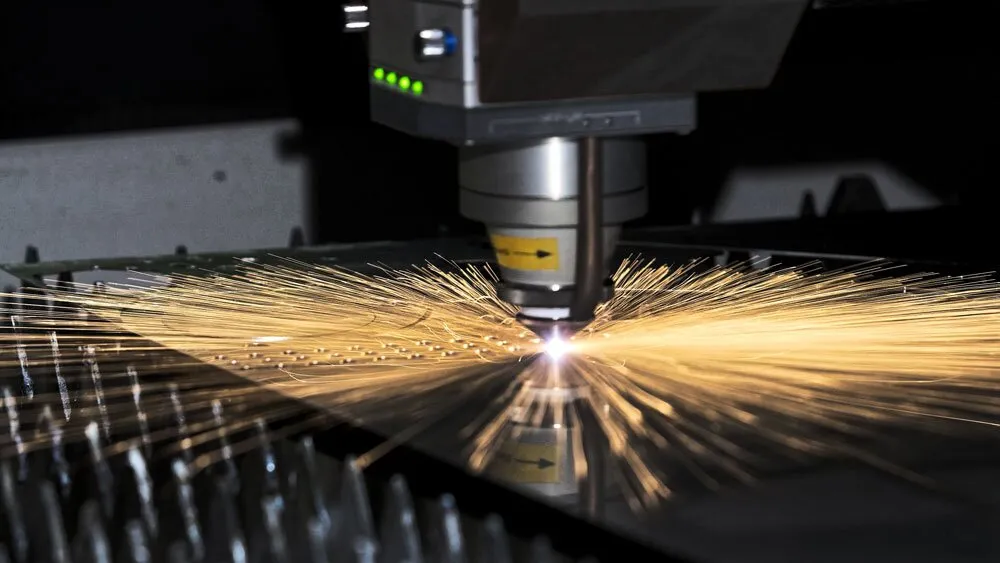
Comparación entre corte por plasma y corte por láser
La tecnología de corte de metales desempeña un papel directo en la calidad de las piezas, el coste y los plazos de producción. Desglosar las diferencias entre plasma y láser ayuda a determinar qué método se ajusta a las necesidades específicas de cada proyecto. He aquí lo que los diferencia.
Precisión
El corte por láser alcanza niveles de precisión de ±0,004 pulgadas, lo que lo hace perfecto para diseños complejos. El haz enfocado crea esquinas nítidas y bordes rectos. Para carcasas electrónicas o piezas médicas, este nivel de detalle resulta crítico.
El corte por plasma alcanza una tolerancia de ±0,02 pulgadas. Aunque menos precisa, esta precisión funciona bien para piezas estructurales, marcos y... soportes. El corte más ancho afecta a la calidad de los bordes, pero rara vez a la función.
Material
Los rayos láser cortan acero, aluminio y acero inoxidable con eficacia. El haz concentrado en calor deja una deformación mínima. En acero al carbono de menos de 1 pulgada, los bordes cortados permanecen limpios y sin escoria.
El plasma manipula metales conductores como el acero y el aluminio. Es excelente con superficies oxidadas o pintadas. El chorro de gas ionizado elimina los contaminantes de la superficie durante el corte.
Velocidad
Las rápidas velocidades de corte distinguen al plasma para materiales gruesos. En acero de 1 pulgada, el plasma corta a 20 pulgadas por minuto. Esto lo hace ideal para grandes volúmenes de producción de piezas pesadas.
El corte por láser es líder en materiales finos, alcanzando 150 pulgadas por minuto en acero de calibre 18. El haz enfocado se mueve rápidamente a través de la chapa metálica. Para piezas detalladas de menos de 1/4 de pulgada, el corte por láser reduce el tiempo de producción.
Compatibilidad con materiales reflectantes
Los láseres de fibra cortan cobre, latón y aluminio sin problemas. El haz de longitud de onda de 1070 nm mantiene la estabilidad en superficies brillantes. Los láseres de CO2 tienen problemas con estos materiales y provocan cortes irregulares.
El grosor de una hoja
Los sistemas de plasma manipulan metal desde calibre 26 hasta 6 pulgadas de espesor. El potente arco de plasma corta chapa de acero gruesa con suavidad. Muchos sistemas funcionan mejor entre 1/2 pulgada y 2 pulgadas.
El corte por láser muestra resultados óptimos en acero dulce de hasta 1 pulgada. Los materiales finos de hasta 0,02 pulgadas se cortan limpiamente. Más allá de 1 pulgada, la calidad del corte disminuye y la velocidad se reduce considerablemente.
Coste
El corte por plasma ofrece unos costes de equipo más bajos, a partir de unos $5.000 para los sistemas básicos. Los costes de explotación se mantienen bajos gracias a la sencillez de los consumibles. Las necesidades de mantenimiento son mínimas.
Los sistemas láser requieren una inversión más elevada, a menudo de más de $100.000. Sin embargo, su precisión y versatilidad compensan los costes de las operaciones de gran volumen. Los costes de funcionamiento incluyen los gases y el mantenimiento especializado.
Funciones adicionales
Sistemas láser marca, grabar y grabar al agua fuerte piezas durante el corte. Esto añade valor mediante la numeración o el marcado de las piezas. Los sistemas modernos también permiten cortar y biselar tubos.
Las unidades de plasma se centran exclusivamente en tareas de corte. Aunque son más sencillas, ofrecen un rendimiento fiable para necesidades de corte sencillas. Algunos sistemas de gama alta ofrecen una capacidad básica de biselado.
Corte por plasma frente a corte por láser: Comparación rápida
El cuadro comparativo que figura a continuación ofrece una rápida visión general de las diferencias.
| Característica | Corte por plasma | Corte por láser |
|---|---|---|
| Precisión | ±0,02 pulgadas | ±0,004 pulgadas |
| Los mejores materiales | Acero, aluminio, metales conductores, superficies oxidadas/pintadas | Acero, aluminio, acero inoxidable, cobre, latón |
| Velocidad máxima (acero 1") | 20 pulgadas/min | 3 pulgadas/min |
| Velocidad máxima (calibre 18) | 100 pulgadas/min | 150 pulgadas/min |
| Gama de espesores | Calibre 26 - 6 pulgadas | 0,02 - 1 pulgada |
| Costo del equipo | $5,000+ | $100,000+ |
| Calidad de los bordes | Bien | Excelente |
| Funciones adicionales | Biselado básico | Marcado, grabado, mordentado, corte de tubos, biselado |
| Zona afectada por el calor (ZAC) | Más grande | Más pequeño |
| Versatilidad | Más versátil para materiales más gruesos y superficies rugosas | Más preciso para diseños intrincados y materiales más finos |
| Mantenimiento | Requiere un mantenimiento más frecuente debido a las piezas consumibles | Requiere menos mantenimiento |
| Nivel de ruido | Más alto | Más silencioso |
| Impacto medioambiental | Mayor debido al gas plasma y los humos | Más bajo |
Corte por plasma frente a corte por láser: ¿Cuál es mejor?
La elección entre láser y plasma depende de tres factores clave: el grosor del material, la precisión requerida y el presupuesto de producción. Cada método aporta ventajas distintas que se ajustan a las diferentes necesidades de fabricación.
Para materiales finos (menos de 1 pulgada)
El corte por láser toma la delantera cuando se trabaja con:
- Piezas de chapa (0,02-1 pulgada)
- Componentes de precisión (±0,004″)
- Diseños complejos con esquinas estrechas
- Piezas que necesitan bordes limpios
- Requisitos multifunción (corte + marcado)
Para materiales gruesos (más de 1 pulgada)
El corte por plasma resulta más eficaz para:
- Plato pesado (1-6 pulgadas)
- Componentes estructurales
- Grandes series de producción
- Patrones de corte básicos
- Proyectos con presupuestos ajustados
Análisis coste-beneficio
Desglosa tu decisión con estas preguntas:
- ¿Cuál es el grosor típico de su material?
- ¿Afecta la precisión de las piezas a la función?
- ¿Cuál es su volumen de producción mensual?
- ¿Necesita operaciones secundarias como el marcado?
- ¿Cuál es su presupuesto para equipamiento?
Elija el plasma para un corte robusto de materiales gruesos a menor coste. Elija un láser para trabajos de precisión en materiales más finos en los que la calidad compensa la inversión inicial.
Conclusión
Tanto el corte por plasma como por láser ofrecen ventajas distintas que se adaptan a diferentes necesidades de fabricación. El plasma es excelente para materiales gruesos y pesados a un coste inferior, mientras que el corte por láser produce piezas de precisión con bordes limpios. La elección óptima depende de factores como el grosor del material, la complejidad de la pieza, el volumen de producción y el presupuesto disponible.
Nuestras avanzadas capacidades de fabricación en corte por plasma, corte por láser, mecanizado CNC y estampación metálica garantizan que su proyecto cumpla las especificaciones. Tanto si necesita la velocidad y rentabilidad del plasma como la precisión del corte por láser, nuestro equipo de ingeniería puede ayudarle a explorar la solución óptima para su próximo proyecto. Contáctenos hoy mismo para empezar.
Preguntas frecuentes
¿Qué método es mejor para materiales gruesos?
El corte por plasma es la mejor opción para cortar planchas de metal gruesas de más de 1 pulgada. Su potente arco de plasma puede cortar rápida y eficazmente acero y aluminio pesados, por lo que es ideal para componentes estructurales y producción de gran volumen.
¿Qué medidas de seguridad se requieren para cada método?
El corte por plasma requiere una ventilación adecuada debido a los humos, así como equipos de protección como ropa ignífuga, pantallas faciales y guantes. El corte por láser plantea riesgos derivados del intenso haz de luz, por lo que es esencial disponer de gafas de seguridad, cortinas de luz y zonas de trabajo controladas.
¿Qué no se debe cortar con una cortadora de plasma?
Las cortadoras de plasma no deben utilizarse en materiales no conductores como madera, plástico o cerámica, ya que el arco de plasma requiere un medio conductor para funcionar eficazmente. Además, los metales altamente reflectantes como el cobre y el latón pueden causar problemas con los sistemas de plasma.
Hola, soy Kevin Lee

Durante los últimos 10 años, he estado inmerso en diversas formas de fabricación de chapa metálica, compartiendo aquí ideas interesantes de mis experiencias en diversos talleres.
Póngase en contacto

Kevin Lee
Tengo más de diez años de experiencia profesional en la fabricación de chapas metálicas, especializada en corte por láser, plegado, soldadura y técnicas de tratamiento de superficies. Como Director Técnico de Shengen, me comprometo a resolver complejos retos de fabricación y a impulsar la innovación y la calidad en cada proyecto.



